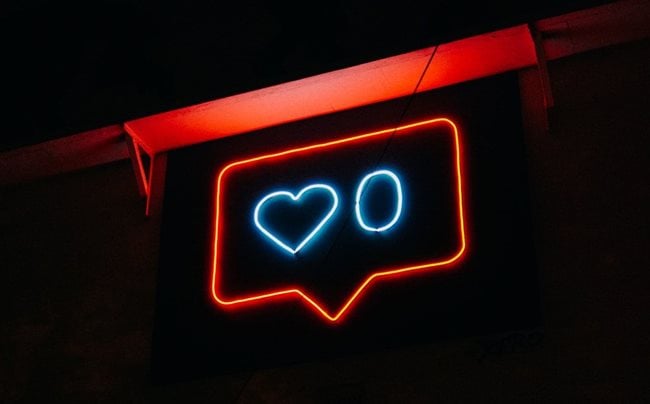
Related




#Trademark: Who owns the IP – the brand or influencer?
Amani Patel 23 Jul 2025

What influencers and brands need to know about #sponsored disclosures
Sarah Suleman 4 Jul 2025

Top stories




The billboard is not attached to the brand message communicated by the advert, and the advert is not attached to the billboard. Similarly, brands and influencers engage in this frigid (very cold) way. No attachment, no emotion, just pure transaction.
Influencers are just human billboards. Why? Because brands treat them as mere media channels. It’s a shame and it is sad that human beings are treated the same as billboards that are made from steel, no emotions/feelings, and no brain. Just conduits that are meant to deliver a message.
This is how it typically works...
A brand that is desperate reaches out to an influencer (billboard), and gives them a message (advert), and the influencer displays the message (content creation). Usually, the influencers are told what to say, how to say it and when to say it. Exactly how billboards work. Billboards have no say in the matter because they (billboards/influencers) need to make money, so they accept everything, regardless of what the message is.
That’s how it typically works, but that’s not how it is meant to work.
Brands have become influencer desperate
I understand the need for influencers to monetize, and I can somewhat understand brands’ desperate need to partner with influencers. Quite disappointing for brands to be this desperate, but I can understand and live with that fact. There’s a reason why brands ultimately become desperate and end up partnering with any influencer that has a decent number of followers. I don’t think there’s sufficient interrogation on the strategic alignment. Brands have lost themselves in the follower rat race.
Due to various factors, brands have since slowed down on trying to aggressively grow their own followers, they are now desperately chasing after the followers of influencers.
If you ask me, the desperation is misdirected. Desperation can be good, but only if pointed in the right direction. I’ll speak about this desperation later.
Influencers: every brand wants one, and everyone wants to be one.
When it comes to influencers, just like billboards, I don’t think that brands have figured out how to use them properly. What’s interesting is that there seems to be more influencers popping up, than there are brands using them.
There is so much fake love between brands and influencers, you’d swear that the brand and influencer relationships are manufactured in China. Nothing is real. My use of “nothing” is obviously to exaggerate, but the point is, there is so much misalignment.
The influencer/brand misalignment
Influencers who would never use certain brands are paid to tell their followers to use those brands.
Influencers that don’t drink alcohol get paid to sell alcohol to their followers.
Influencers that have never created content on eating or drinking are paid to tell their followers to eat this and drink that.
An influencer that is irrelevant to the target audience of the brand is used as the mouthpiece of the brand.
You will see one influencer working with multiple brands in the same category. That is ludicrous. The rule of thumb should be that if a competitor brand has already used an influencer, then you shouldn’t touch them – no matter how good the influencer is. You will never see Adidas use the same influencers used by Nike or Puma, ask yourself why.
It’s all about strategy
The reason you will never see one influencer working with Nike or Adidas or Puma at the same time, apart from ego, is strategy. These brands know the value and power of association. Most brands in most categories or industries don’t know the importance of exclusivity when it comes to influencers, they will use the same influencer their competitor is using. Criminal I tell you.
First, brands should reduce their reliance on influencers. Why are so many brands relying on influencers to do the marketers’ jobs?
Second, brands should be able to build stronger brands outside of influencers. One could argue that influencers play a significant role in building the brand when you look at case studies like the Michael Jordan + Nike partnership. Michael helped build Nike.
Well, the difference is that it is a partnership. Michael was not just a channel that delivered the Nike message. His message was closely linked to Nike. Their values, intent, beliefs, and ways of thinking were aligned. Michael wasn’t told what to say. There was synergy and respect between the two brands (MJ and Nike). Michael wasn’t just a billboard. He was a human being with feelings, emotions and he embodied all that the brand stood for. There was meaning in the partnership.
The answer is always in strategy
All this misalignment is due to the negligence of strategy. If you are wondering how the influencer and brand relationship should work, the answer is in strategy. Strategy should guide every single decision or choice that a brand makes. It is criminal for influencers to be selected on vanity metrics like how many followers they have.
Brands are paying less attention to the brand building process, and are just throwing money at influencers, and are not carving out paths that allow for the growth of equity for the brand, outside of influencers.
These days, brands don’t have their own stories. Brands are just saying what the streets are saying. They are simply borrowing from cultural trends, and not building assets that have substance and meaning.
Answering the above is a great start to building a brand that is less reliant on influencers.
How to be strategic with influencers
Always make sure that alignment is strategic and not based on followers or popularity. Make sure that your brand has a clear role and purpose. Select influencers based on the problem that you are solving, ensure that the influencers connect to the problem that you have identified, not just the brand or the audience you are hoping to reach.
Involve the influencers into the creative development process – don’t just send them emails with copy that they need to copy and paste. Get them to co-create and co-design.
Depending on what kind of influencer you have chosen, get them involved in the early stages. For example, if you are going to use Kwesta in an ad campaign, this man is a creative genius that is conceptually strong and can tell vivid stories that make people fall in love with the township. This means that he not only brings the followers, but he also brings context, insights, and creative prowess to help the brand produce work that is right. Kwesta is a conceptual writer or copywriter that just chose to do music. Overall, he is a comprehensive creative mind that should be treated as such, and not reduced to an influencer, i.e.: billboard.
Make sure that the influencers use the products in their private life (if you are asking why, the answer is; influencers are not billboards, they are humans with human experiences, and it is through experiences that we connect, resonate, and find meaning in nuance and detail.
Don’t just chase followers, ensure that there’s alignment in values, beliefs, and ways of thinking – there needs to be a stronger link between influencer and brand.
Don’t use the same influencer that your competitor is using – no matter what – there’s no excuse for doing this, it is just laziness at its best, because finding the right influencer for your brand will take time, energy, and effort.
Influencers are not billboards, and therefore shouldn’t be treated as such. If you are going to use an influencer, make sure that you are interested in more than just their followers. Assess their values, ways of thinking, beliefs, and what they care about.
Don’t just work with influencers, make sure that the influencers will work for the brand.
To brands, choose influencers, not because of their following only, but also because they are the right fit strategically and that they can deliver on the objectives of the brand. Nike does this very well.
Learn from Nike
Nike does not drop athletes, unless they must, and that decision is not influenced by external forces, but rather, by internal values. Any other brand would have dropped Tiger Woods and Colin Kaepernick.
When Old Mutual dropped The MacG podcast after the controversial comments around transgender, Trevor Ndhlovu, who is CEO at BrandReserve Co said; “Old Mutual lost an opportunity to do things differently. A missed opportunity to do the right thing through education, not only for MacG and hosts, but for the listeners and followers of the podcast as well”. Trevor continued to say; “That would have been more powerful than cutting ties only.”
As people, we forget that influencers are humans too and are therefore not immune to making mistakes or being vulnerable. Unlike an insensitive tv commercial or billboard that can easily be taken down, working with humans (influencers) provides an opportunity that doesn’t exist with traditional inanimate channels, which is the ability to talk, engage and exchange.
The opportunity that comes with influencers/celebrities making mistakes is that the mistakes get put on the grandstand, and as such, the same grandstand can be used to change the narrative through education. Instead of just dropping MacG, could Old Mutual have used the same platform to have further and robust conversations on the topic; allowing and enabling for education and enlightenment to happen?
I think what leads to brands cutting ties without blinking; beyond the diversity, equity and inclusion conversation is that brands are generally chasing the followers of the influencers, and not entirely interested in the influencer. When the followers throw backlash, brands react to it.
If brands truly believed in the influencers or the platforms that they partnered with, I believe that they would react differently.
The purpose of using influencers is not to pass on the message. It is to connect. It is to create an emotional linkage between, brand, influencer, and the audience.
Whenever you are unsure, always go back to your strategy to make decisions. Your strategy (if you have one) has essentially prioritised what matters, what is important to the brand and what needs to be done.
A clear strategy should make decisions about who, what, where, why, when, and how clearer.
As we enter a new season, where the sun will come out, people will be dressed brightly to impress, I hope that brands will work better with influencers, to create much better campaigns that are more genuine, slightly more believable and feel less like advertising.
*Influencers are not billboards; brands use them as such.
